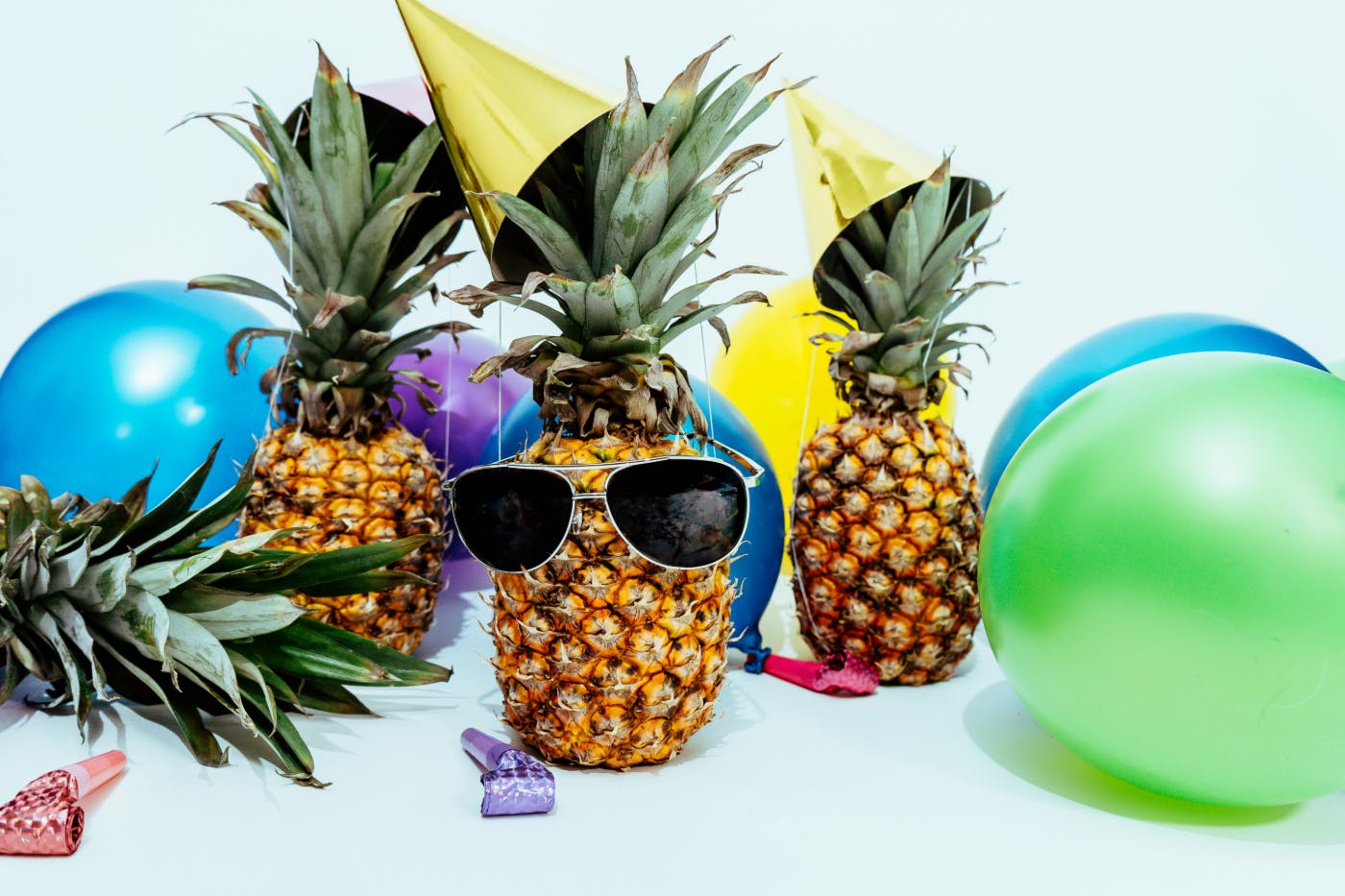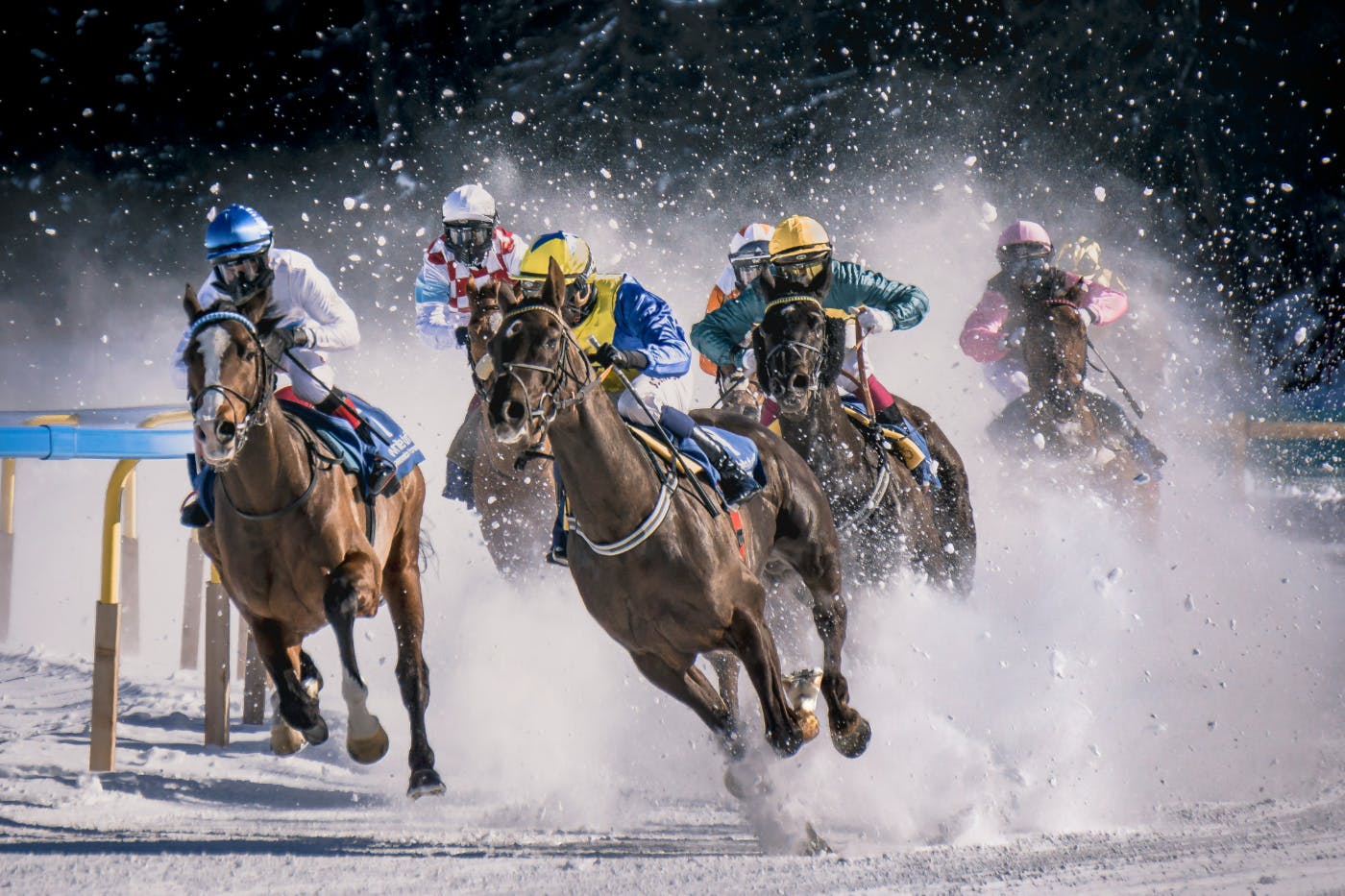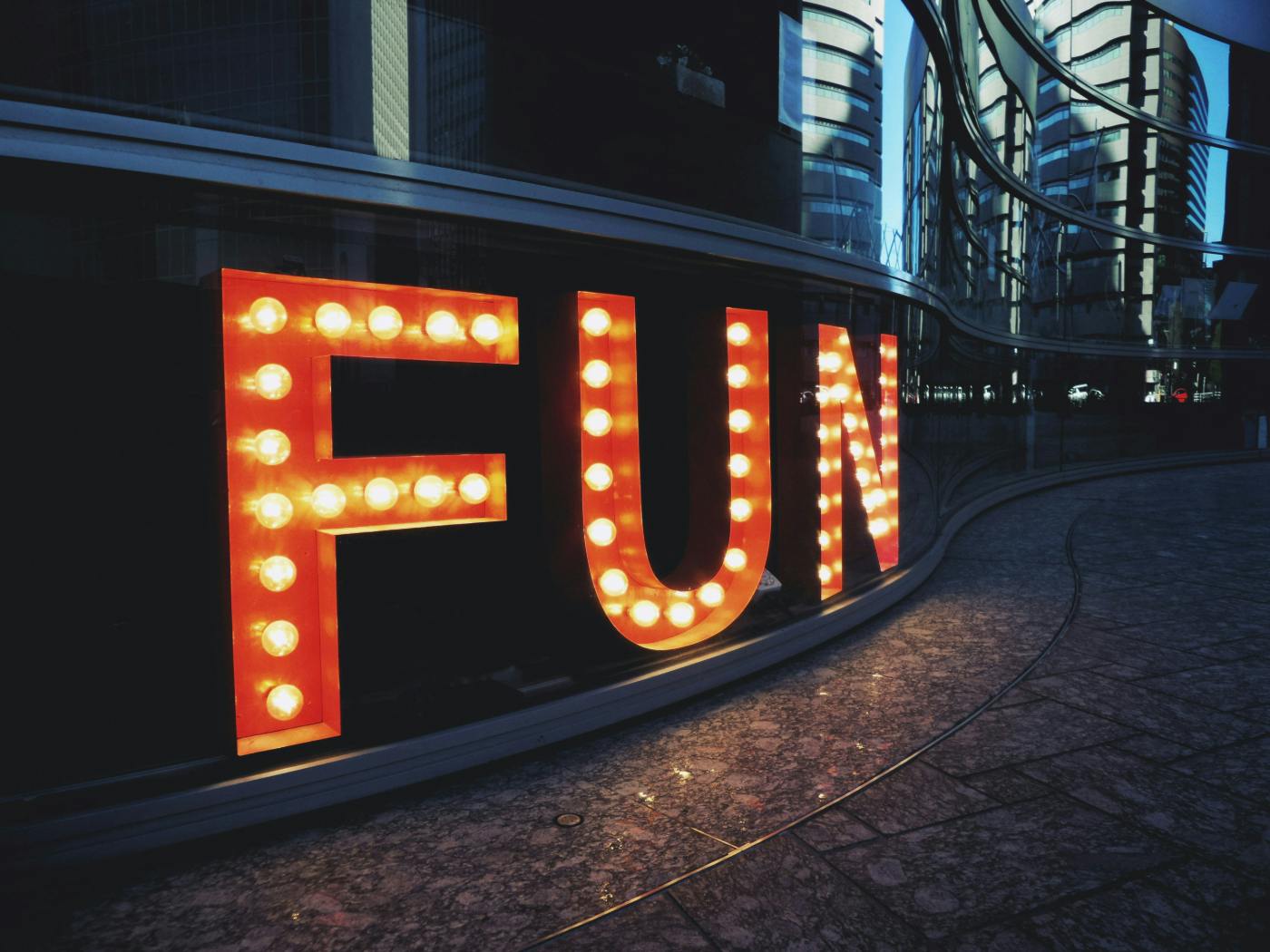

Let’s dig into how brands create, measure, and market "fun," and why it’s become such a central piece of their strategies.
I once worked with a guy who had the worst table manners ever. He once told me that he grew up in a house with six brothers, and family meals were like the Wild West—you had to fight for every mouthful or morsel you could get. That behavior growing up shaped how he ate as an adult. He held his fork in his fist, scooping food onto it with his free hand and shoveling it into his mouth. It was always head down, devouring every bite. When he took a break—just long enough to glance around the table—he’d always reassure us with, “This is fun, right? We’re having fun, aren’t we?” Then, back to the meal.
Thinking back on those meals, what stayed with me wasn’t his odd eating habits (after all, he explained them with humor—growing up in a house with six brothers will do that to you). What really stuck was his insistence that we were having fun. No matter how messy or chaotic the meal got, it had to be fun. He needed to reassure himself and everyone else that this was, in fact, an enjoyable experience.
I think of him now and again when I’m working with brands. So much of branding is about "fun," but I often wonder—why is one tortilla chip fun and another one isn’t? How do brands decide what’s fun, and why has it become such a dominant force in marketing? Today, let’s dig into how brands create, measure, and market "fun," and why it’s become such a central piece of their strategies.
Why "Fun" Became a Dominant Branding Theme
In the world of branding, "fun" isn’t just a vibe—it’s an emotional trigger that resonates with consumers on a deep level. But how did "fun" become such a cornerstone of modern branding? Let’s break it down:
Cultural Shifts
Over the years, consumer preferences have shifted away from the serious, corporate tones of traditional advertising. Today, people crave authenticity, connection, and relatability, and "fun" has become a shortcut to achieving all of these things. Think about how much more powerful a playful, humorous brand can feel versus a stiff, corporate one. Consumers today want to feel like they’re dealing with a brand that understands them, not one that’s trying to sell them something. The rise of social media, in particular, has created an environment where being relatable and fun is key to winning consumer attention.
The Desire for Escapism
The world feels heavier these days, with news cycles often bombarding us with stress and uncertainty. In this context, consumers turn to brands that provide a sense of relief, a break from the pressures of life. This is where "fun" comes in—it’s not just about lightening the mood; it’s about offering an escape, even if just for a moment. Fun gives people a sense of freedom, something refreshing to look forward to in their daily lives. And brands that can tap into that escapism find themselves building deeper emotional connections with their audience.
The Connection to Youthfulness
Another reason fun has become such a staple in branding is its association with youth. In branding, youthfulness isn’t just about age—it’s about energy, vitality, and an openness to new experiences. Fun is a way for brands to capture that youthful spirit and market themselves as fresh and exciting, no matter their actual age. Brands that lean into fun give off an air of playfulness and freedom that appeals to consumers’ desire to stay young at heart. This is why you see even more established brands embracing fun—they want to remain relevant, hip, and dynamic.
The question now is: how do brands actually market this "fun"? The answer lies in how they communicate it—through language, visuals, and consumer experiences. Let’s take a closer look at how brands turn "fun" from a concept into something that their audience can feel, touch, and engage with.

How Brands Market "Fun"
Once a brand decides that "fun" will be part of its identity, the next challenge is to figure out how to convey it to consumers. Fun isn’t just a feeling; it’s something that needs to be experienced, expressed, and absorbed by the audience. Here’s how brands make "fun" tangible:
Tone of Voice
A brand’s voice is one of the most powerful ways to market fun. Whether it’s cheeky, playful, or irreverent, the language a brand uses creates a direct connection to the idea of fun. Take Old Spice, for example. Their campaigns are built around humor, surprise, and even absurdity, creating a fun and light-hearted tone that cuts through the noise. Taco Bell, too, uses humor in a unique way, with snarky social media posts and witty campaigns that feel more like a conversation between friends than a corporate message. The key is consistency—when a brand commits to a fun, approachable voice, it becomes part of the brand’s DNA, something customers come to expect.
Visual Identity
Fun is also communicated through color, design, and imagery. Bright, bold colors—think of the neon pinks and yellows of brands like Fanta or McDonald’s—immediately signal that something fun is coming. Quirky designs, playful fonts, and engaging visuals all work together to create a fun atmosphere around a product. A brand like Coca-Cola capitalizes on this by combining vibrant colors, uplifting imagery, and catchy slogans that turn even a simple soda into something synonymous with joy and celebration. It's about creating a mood that is unmistakably lighthearted and enjoyable.
Experiential Marketing
Fun isn't just about what’s said or seen—it’s about what’s experienced. Brands are increasingly turning to experiential marketing, where consumers are invited to interact in a fun and engaging way. Pop-up events, virtual reality experiences, or interactive social media campaigns all play on the idea of fun as something that’s shared and enjoyed in real-time. For example, Red Bull has mastered experiential marketing with events like the "Red Bull Flugtag," where participants create flying machines and launch them off a platform, bringing the brand’s adventurous, fun-loving spirit to life. When consumers are immersed in these experiences, they associate the brand with fun in a way that goes beyond traditional advertising.
Influencers and User-Generated Content
Influencers and user-generated content are another key part of how fun is marketed. Influencers who share their fun, quirky personalities can help make the brand seem more playful and relatable. Think about the fun energy influencers bring to TikTok challenges, dance routines, or viral trends—brands like Chipotle or Oreo tap into these trends by aligning themselves with fun, easily shareable content. The content becomes a co-created experience between the brand and its audience, where fun is both initiated and amplified by the consumers themselves.
Now that we've seen how brands market fun, it's clear that fun isn't just an attribute—it’s a whole marketing strategy. But how exactly do brands make sure that this "fun" is authentic, and not just a gimmick? Is it possible for brands to take fun too far?
The Fine Line Between Fun and Gimmick
Fun branding can be an incredibly effective way to create lasting connections with consumers, but it’s a delicate balance. There’s a fine line between being authentically fun and falling into the trap of being a gimmick. Here’s why authenticity is crucial and where brands often go wrong:
Authenticity Matters
The key to successful fun branding is authenticity. When a brand is genuinely fun, it feels natural, aligned with its identity, and true to the experience it offers. Think about brands like Ben & Jerry’s or Nike—they’ve built their reputation on being unapologetically themselves, with a clear personality that shines through in their campaigns. Their fun branding doesn’t feel forced; it feels like a natural extension of who they are and what they stand for.
On the other hand, when a brand’s fun feels disconnected from its core values or seems like it's trying too hard, it can quickly come across as disingenuous. This happens when brands latch onto a fun theme because it's trending, without considering how it fits within their overall brand story. Consumers are quick to pick up on this, and it’s a major turn-off.
The Risk of Overdoing It
Fun works well when it enhances the customer experience, but it can also be overdone. Too much of a good thing can turn a playful message into something annoying or off-putting. Take brands that continually lean on humor or absurdity—it can be hilarious at first, but over time, if there’s no deeper connection or substance, consumers can grow tired of it. A brand that’s constantly trying to make everything "fun" can start to feel like it's trying to distract from a lack of real value.
This is where the risk of fun branding turning into a gimmick lies: if the "fun" is more about the joke than the product itself, it’s easy for consumers to see through it. It’s important that the fun aligns with the product’s purpose and adds value to the overall experience. If the "fun" overshadows the actual product or service, it can create a disconnect, making it feel more like a sales trick than an enjoyable experience.
Sustainability of Fun
Brands that thrive on "fun" need to ask themselves a crucial question: Can this fun be sustained? If a brand’s personality is built around being the "fun" choice, it needs to be able to maintain that energy over time without feeling stale. Consistency is key—but so is evolution. Brands that succeed at keeping their fun element fresh know how to innovate and stay relevant without losing their core essence.
For example, Coca-Cola’s holiday campaigns are a classic example of fun that’s both seasonal and sustainable. The fun isn’t just in the product itself, but in the way Coca-Cola creates magical, emotional experiences around the holidays, year after year. They’ve kept the fun consistent while still evolving with the times, so it never feels dated or forced.
Now that we’ve examined the potential pitfalls of fun branding, it’s time to look at one of the most important aspects of fun: how it resonates emotionally with consumers. This emotional connection is what elevates fun from a mere marketing tactic to a powerful tool that drives brand loyalty. Let’s explore that in the next section.

The Emotional Connection: Why Fun Matters
When it comes down to it, the reason brands embrace "fun" isn't just to entertain—it’s to forge a deeper, emotional connection with their audience. Fun isn’t just a superficial quality; it’s a vehicle for feelings, memories, and experiences that resonate with consumers on a personal level. Here’s why fun works as an emotional trigger:
Creating Positive Associations
Fun is, by nature, positive. When a consumer associates a brand with fun, they’re also associating it with positive feelings—joy, excitement, freedom, and even nostalgia. These positive associations build trust and loyalty. People are more likely to remember a brand that made them smile, laugh, or feel uplifted, even if the product itself is secondary to the experience. For instance, brands like M&M’s use humor and whimsy to create an atmosphere of lightheartedness, turning their candy into a symbol of joy and indulgence. The emotional takeaway? You’re not just buying candy—you’re buying happiness in a colorful, playful package.
Building Shared Experiences
Another powerful aspect of fun branding is its ability to create shared experiences. Think of viral campaigns or interactive experiences that engage people in a way that’s both fun and inclusive. Fun isn’t just personal; it becomes collective. When a brand’s fun elements are shared by a community—whether it’s through social media challenges, user-generated content, or a live event—it creates a bond between consumers. This bond strengthens brand affinity and makes consumers feel like they’re part of something larger. For example, brands like Coca-Cola have successfully used personalized campaigns (such as their “Share a Coke” campaign) to create emotional experiences that resonate with consumers on a personal level while still tying back to the larger brand experience.
The Role of Nostalgia
Fun branding often taps into nostalgia, connecting consumers to happier times, childhood memories, or moments that evoke a sense of simplicity. Nostalgia isn’t just a marketing gimmick—it’s a psychological trigger that taps into emotions people associate with fun and carefree times. Brands like Disney excel at using nostalgia as a way to build emotional connections, inviting consumers to relive the joy of their youth. For adults, this nostalgic fun becomes a way of reconnecting with a time when life felt simpler and more carefree.
When brands manage to tap into these positive emotions—whether through humor, shared experiences, or nostalgia—they don’t just market a product. They create memories. These emotional connections are what transform a simple purchase into a lasting, loyal relationship with the brand.
Having explored the emotional impact of fun in branding, it’s time to look at a few brands that have mastered the art of fun and how they’ve successfully used it to their advantage. Let’s see how these brands have made “fun” a key part of their identity and what others can learn from their approach.

Fun in Action: Brands That Have Mastered It
Now that we’ve covered the psychology and strategies behind fun branding, let’s look at some brands that have truly nailed it. These companies have made fun an essential part of their identity, proving that when done right, fun can be a powerful tool for creating lasting consumer connections. Here are a few standouts:
Old Spice
Old Spice’s "The Man Your Man Could Smell Like" campaign revolutionized the way brands use humor and absurdity to market their products. The campaign’s over-the-top humor, paired with charming absurdity, captured the audience’s attention and quickly became a pop culture phenomenon. Old Spice’s fun brand voice is infused into everything they do—whether it’s a witty social media post, a humorous TV commercial, or their tongue-in-cheek messaging. The brand has transformed from an old-school, traditional product to something exciting and fun, proving that fun branding can reinvent even the most established names.
Taco Bell
Taco Bell is another brand that uses fun as a core pillar of its marketing strategy. From quirky, fun commercials to cheeky social media presence, Taco Bell has turned the fast-food experience into something more playful and entertaining. Their humorous approach, including campaigns like the "Taco Bell Hotel" (where they opened a pop-up resort themed entirely around Taco Bell), is proof that the brand knows how to have fun without taking itself too seriously. Taco Bell has consistently stayed on top of pop culture, leveraging humor and fun in a way that resonates with its audience while keeping the brand feeling fresh.
Ben & Jerry’s
Ben & Jerry’s doesn’t just sell ice cream—they sell an experience. The brand has embraced fun in its product names, its social responsibility efforts, and its marketing campaigns. The fun element is present in everything they do, from their quirky, creative flavor names to their unique packaging and memorable ad campaigns. They use fun as a way to both entertain and connect with their audience emotionally, often infusing humor into their messages about social causes or climate change. Ben & Jerry’s shows that fun branding doesn’t have to be frivolous—it can be purposeful and still bring joy.
Red Bull
Red Bull has built a global brand around the idea of fun and adventure. Known for its extreme sports events and stunts (like skydiving from space), Red Bull takes "fun" to the next level by tying it into experiences that push boundaries and excite audiences. Through its sponsorship of high-energy sports, partnerships with extreme athletes, and viral marketing campaigns, Red Bull successfully markets its product as more than just an energy drink. It’s an invitation to live life to the fullest, embrace excitement, and take risks, making the brand synonymous with fun and adventure.
By looking at these brands, we can see the many different ways that fun can be integrated into a brand’s identity. Each of these examples demonstrates how fun can be a key differentiator in a crowded market, creating deeper emotional bonds with consumers. But how do brands maintain that connection over time without losing their spark?

The Future of Fun Branding
As we’ve seen, fun branding has become an essential part of many brands' identities, but as consumer expectations evolve, so too will the ways in which fun is integrated into branding. The future of fun branding is likely to be shaped by several key trends:
Increased Personalization
In the age of data and AI, brands will have even more opportunities to personalize their fun messaging. Tailoring the fun experience to individual preferences, interests, and behaviors will allow brands to forge even stronger connections. Imagine a personalized “fun” experience where a brand adapts its humor or interactive elements to fit the customer’s personality. This level of personalization could elevate fun branding from a broad appeal to something deeply engaging and personal.
Inclusivity and Diversity
As society becomes more focused on inclusivity, fun branding will need to reflect this shift. Future fun branding will likely become more diverse and inclusive, acknowledging different cultures, identities, and experiences. Fun won't just be one-size-fits-all—it will need to resonate with a broader range of people, creating a fun experience that feels welcoming and representative of all.
Tech-Driven Fun
With the rise of virtual and augmented reality, the possibilities for fun branding are practically limitless. Consumers may soon experience brands in immersive digital environments, where fun is not just something they watch or read about—it’s something they experience firsthand. From VR events to interactive online experiences, tech will play a huge role in shaping the future of fun branding.
Purpose-Driven Fun
As consumers demand more transparency and social responsibility from brands, the fun element will need to align with a brand’s purpose and values. Fun branding won’t just be about lightheartedness—it will need to be meaningful, thoughtful, and authentic. Brands that can combine fun with purpose-driven messaging will be better positioned to connect with consumers who value both enjoyment and social impact.
Summing Up
In the world of branding, "fun" is more than just a buzzword—it's a powerful tool that helps brands build emotional connections with their audience. Whether through playful tone, colorful visuals, or engaging experiences, fun has become a way for brands to stand out in a crowded market. But fun branding is not without its risks. When done authentically and thoughtfully, it can create lasting bonds with consumers. However, when it’s forced or disconnected from the brand’s core values, it can feel like a gimmick.
As we look to the future, fun branding will continue to evolve, embracing new technologies, personalizing experiences, and reflecting the diverse and inclusive world we live in. The brands that successfully balance fun with authenticity, purpose, and relevance will likely be the ones that thrive in the years to come.
At ThoughtLab, we’ve seen firsthand how brands that stay true to their values while incorporating fun can create deeper, more engaging connections with their audiences. As the branding landscape continues to shift, the brands that innovate with authenticity and creativity will stand out—and we’re here to help guide that journey.
